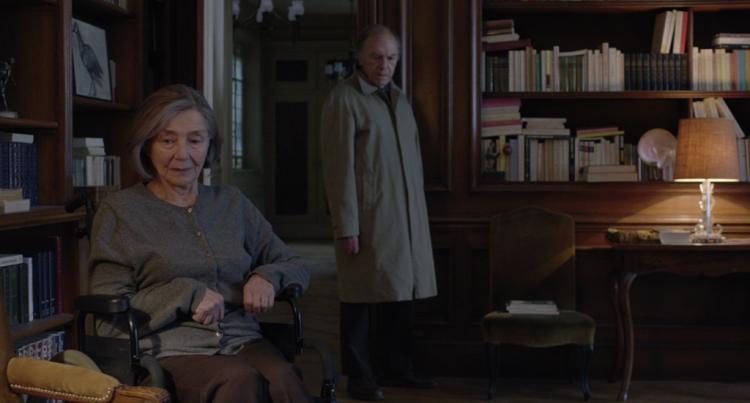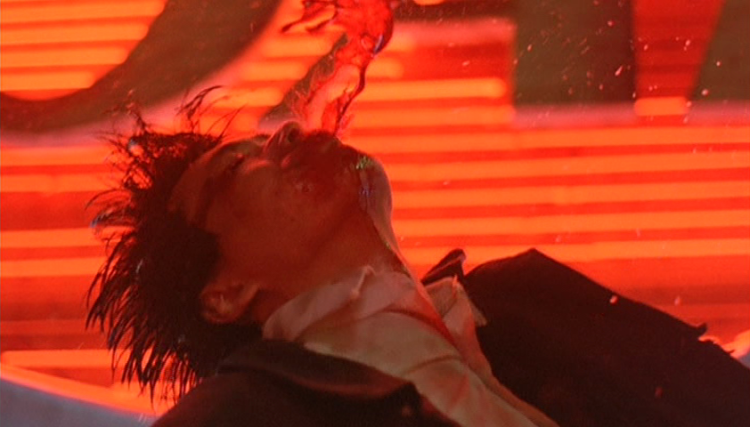Old Europe (Amour, Impardonnables)
Although nearly the entire film takes place inside a swanky apartment belonging to an elderly Parisian couple, Michael Haneke’s Amour (2012) is less elliptical and more straightforward as storytelling than the director’s other movies. When the story begins, Anne (Emmanuelle Riva) appears to be in pretty good shape, so it’s a bolt from the blue when she suffers a minor stroke while having breakfast with her husband, Georges (Jean-Louis Trintignant). After a procedure meant to prevent a bigger stroke leaves her paralyzed on the right side of her body, it becomes apparent that Anne’s condition is only going to get worse, and the bulk of the movie is dedicated to charting her decline in minute detail — though I seem to be in the minority in not finding this process terribly interesting to watch for the better part of two hours. The film opens with the police breaking into the apartment where they discover Anne’s corpse, and by telling the story in flashback, Haneke generates an air of mystery about what happens to Georges. Also, there’s an intriguingly ambiguous scene in which he curtly dismisses one of Anne’s nurses; since we don’t know what, if anything, she did wrong, we can’t side with either person. But on the whole, I found this pretty thin and monotonous; one expects Haneke to be austere but this is the first movie of his that I’d describe as minimalist.
On the other hand, that’s probably the last word I’d use to describe André Téchiné’s Impardonnables (2011), a film bursting with intriguing characters. Based on a 2009 novel by Philippe Dijan (which I haven’t read), the story begins with a French novelist, Francis (André Dussollier), renting a house near Venice to do some writing, but when his grown daughter, Alice (Mélanie Thierry), comes to visit him a year and a half later, he hasn’t written a word, although he is happily married to his real estate agent, Judith (Carole Bouquet), who’s significantly younger than he is. Francis’ peaceful life starts to unravel when Alice suddenly disappears and he begins to suspect that Judith is having an affair, prompting him to enlist Anna-Maria (Andriani Asti) — a retired private eye and Judith’s former lover — to look for Alice, and her son, Jérémie (Mauro Conte), to spy on Judith.
It’s characteristic of Téchiné’s work that all of the major characters are flawed in one way or another yet none of them are entirely unsympathetic. However, as in his previous film, La Fille du RER (2009), the story’s concentration on a closely knit group of very particular characters whose motives are often ambiguous tends to preclude any broader social commentary, even when the plot moves into territory that seems to call out for it. In particular, although it’s gradually revealed that Jérémie was in prison for committing hate crimes against gays, the film doesn’t attempt to explain his behavior. There’s no evidence that he’s a repressed homosexual, and while the movie leaves open the possibility that his homophobia has something to do with his relationship with his mother (who’s a militant lesbian), the film doesn’t spell out the connection. In other words, Téchiné’s awesome strengths as a storyteller — chiefly, his ability to create specific, nuanced characters and his refusal to offer any simplistic explanations for their actions — make the film fascinating and mysterious but also limit its resonance.





